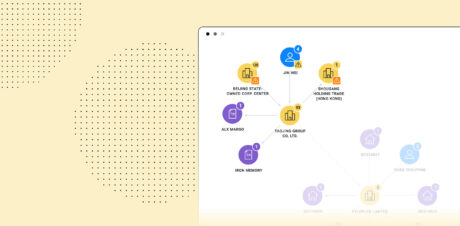Supply chain visibility: not just for forced labor compliance
The introduction of the Uyghur Forced Labor Prevention Act (UFLPA) more than three years ago marked the beginning of a global wave of import regulations. Beyond forced labor, we’ve seen the introduction of new ESG regulations such as the EU Deforestation Regulation (EUDR) and the Corporate Sustainability Due Diligence Directive (CSDDD). The current volatile tariff landscape has further increased the focus on import controls.
A foundational requirement across these import control regulations is the need for enhanced visibility into an organization’s supply chain. Organizations now have a shared understanding that this visibility, beyond simply mitigating risks, enhances supply chain resilience, strengthens brand reputation, and ensures long-term business sustainability.
In Sayari’s webinar with the American Apparel & Footwear Association (AAFA), Supply Chain Visibility: Beyond the UFLPA, we provide examples of how organizations can use corporate attributes and external trade data to achieve supply chain visibility.
Achieving enhanced visibility with corporate attributes
Corporate attributes, which include ownership and identifier details, can be coupled with external trade data from government sources, customs agencies, and freight forwarders to help organizations get enhanced insight on sub-tier suppliers. Combining these two data types provides the best visibility into supply chains to assist in meeting import control requirements.
Corporate attributes, in particular, provide a wealth of information on controlling interest, subsidiaries, and location. Most corporate attributes, however, are not available via watchlists or supplier disclosures. Combining list-only data with information from public records provides a more complete picture of an entity.
Table 1: Corporate attributes available in lists only versus attributes available via lists and public records
Here are three examples of how corporate attributes gleaned from public records can help uncover key details that enhance visibility:
- Legal Name: A translated company name may be missing key identifying information found in its native language. For example, the word Xinjiang or Urumqi (a city in Xinjiang) found in a native language record can be a quick way to identify likely forced labor risk.
- ID Number: The Chinese Unified Social Credit Code (USCC) is a number unique to each legal entity operating in China. Embedded within the ID number’s third and fourth digits is the company’s province of registration. If these digits are six and five, we know that a company has been registered in Xinjiang. Similar codes exist for other countries as well, making a unique identifier like a USCC a valuable step toward validating entity information.
- Business Purpose: A tier 1 supplier may claim to substantially transform a garment to imply protection from tariffs imposed on upstream countries. However, if this supplier’s business purpose does not align with manufacturing activity, this could be a red flag of potential tariff-related risks requiring further due diligence.
>> Learn how to use corporate records to identify human trafficking red flags <<
How Sayari delivers visibility through corporate attributes
For many organizations, UFLPA compliance has helped establish the crucial due diligence and deep supply chain visibility essential for broader import control success. Data-driven visibility, supported by corporate and external trade data, directly translates into tangible results. For example, tariff optimization becomes possible because deep supply chain knowledge enables accurate origin determination to minimize tariff risks. Comprehensive due diligence systems developed for forced labor compliance provide a significant head start on meeting ESG obligations under such regulations as the evolving EUDR.
Corporate records can be accessed and analyzed manually, but this method is time consuming and error prone, especially as organizations look to leverage activities across multiple import control regulations. Automated solutions help organizations efficiently uncover and process the data underlying their supply chains.
Sayari collects, parses, resolves, and links billions of corporate and trade data records to help organizations achieve enhanced supply chain visibility. Sayari solutions instantly generate filterable, product-specific supply chain maps identifying sub-tier suppliers and upstream risk. As a result, organizations can accelerate risk prioritization to more efficiently allocate diligence resources.
For examples of how you can use publicly available corporate and trade records to establish a comprehensive approach to import compliance, watch our webinar on uncovering hidden risk in supply chains.



